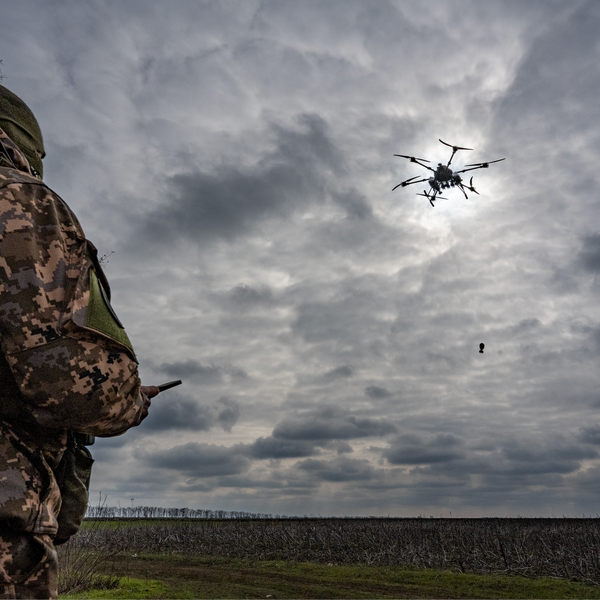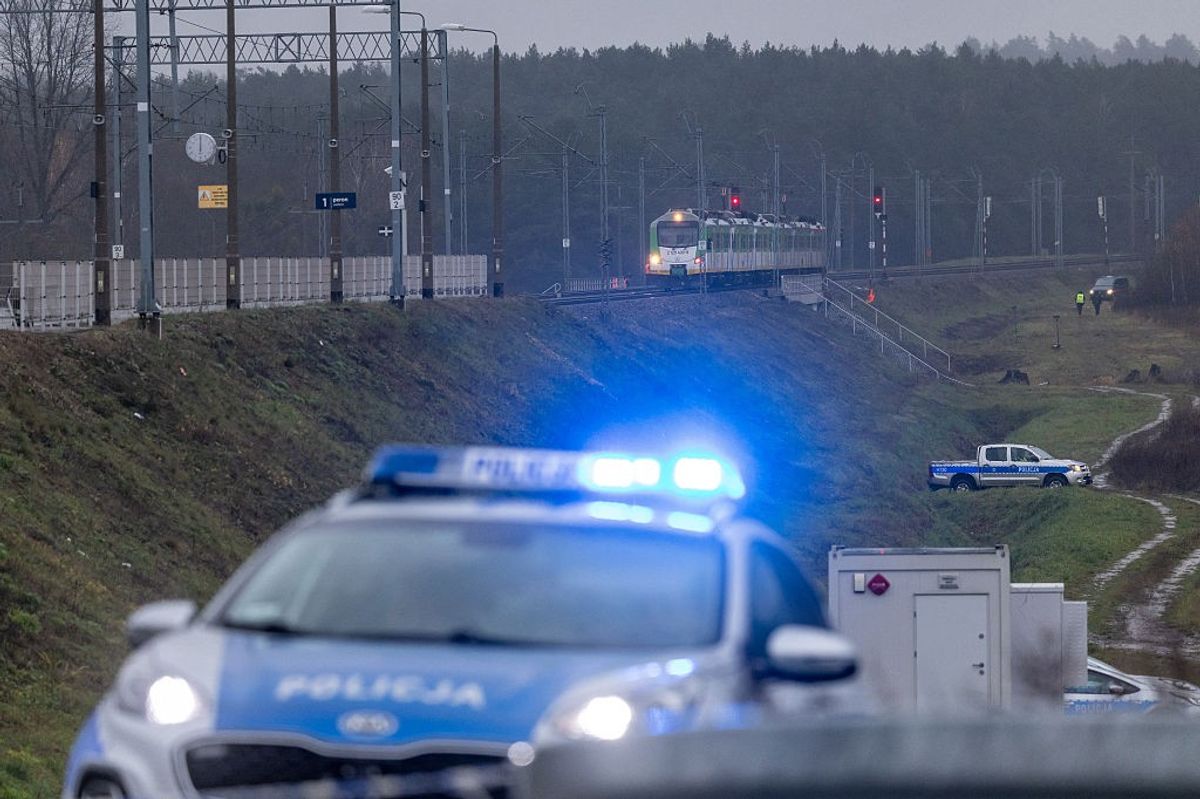OPINION — We are in a high-tech surveillance, cyber espionage, and big-data era and it would be simple to assume that old-fashioned human intelligence (HUMINT) has passed its time. Instead, recent history shows HUMINT espionage remains the lifeblood of national security – something the CIA cannot afford to lose if it ever needs to deal with a catastrophic disaster.
Technical collection can reveal what enemies have, but human sources alone can best tell us what enemies think and intend. Nowhere is this more evident than in Russia's and China's intelligence struggles against the United States, where human sources have been essential to breaking secretive regimes and where the cost of HUMINT failures has been steep.
Technology vs. human insight
Satellites, signal intercepts, and open-source analysis facilitated by AI are powerful tools in the hands of the IC community but have inherent limitations. Authoritarian regimes like Russia and China pose rigid countermeasures to the field: Among them are encrypted communication, denial and deception tactics, and information control that can evade purely technical intelligence gathering.
A well-placed agent can get to where no satellite can gaze, and no algorithm can decode – from behind-doors political agreements to the reasons for military actions. For example, in the 1962 Cuban Missile Crisis, it was not just U-2 spy planes that warned Washington of the threat, but also a Soviet insider who provided crucial context.
Colonel Oleg Penkovsky, a senior Soviet military intelligence officer who secretly worked for the CIA and MI6, provided in-depth intelligence about Soviet missile capability and intentions. His intelligence was so significant that a CIA report on the missile threat in Cuba – code-named "Iron Bark" – expressly used information supplied by Penkovsky. This HUMINT asset enabled U.S. analysts to identify the missiles in Cuba and gauge Soviet intent, allowing President Kennedy to know how to calibrate his response.
No amount of imagery alone could have yielded this level of insight.
The case of Penkovsky, who is repeatedly described as "the spy who saved the world," serves to underscore that even at the height of America's technological dominance, it was a human asset that made the vital difference.
Now, as the narrative of this article shifts back to the 21st century, the human element is still in center stage. In 2016, while the U.S. was struggling to find out about and discourage potential foreign interference in its elections, a high-level informant inside the Kremlin proved invaluable.
This longtime CIA source (as U.S. media have reported) provided Washington with a window into Vladimir Putin's personal involvement in overseeing Russia's election interference (a conclusion still contested in some IC circles). This source had access to Russian leadership intentions and security planning secrets that no hacker or spy satellite could penetrate.
Reporting from this asset enabled U.S. agencies to conclude with certainty that Putin personally was behind the alleged interference operation. Such a revelation exemplifies HUMINT’s unique value: illuminating an adversary’s decision-making at the very top. Interestingly, when security concerns led the CIA to extract the asset from Russia in 2017, it has been reported to have "effectively blinded" U.S. intelligence from access inside Putin's inner circle from then on. That is, the loss of a single well-placed human source created an intelligence gap that technical capability was not able readily to fill.
For an intelligence community that is regularly praised for its technical wizardry, this was a stark reminder that there is no substitute for eyes and ears on the ground.
The intersection of technology, defense, space and intelligence is critical to future U.S. national security. Join The Cipher Brief on June 5th and 6th in Austin, Texas for the NatSecEDGE conference. Find out how to get an invitation to this invite-only event at natsecedge.com
Learning from failure: The cost of lost sources
Whereas HUMINT successes can reap incalculable benefits, HUMINT failures can prove similarly momentous. Nowhere has this been more evident than in the CIA's attempts to spy on China, a "hard target" nation with a notoriously effective counterintelligence apparatus.
In the early 2010s, the CIA suffered what former officials characterized as among its worst setbacks in decades: the systematic roll-up of its agent network in China. Chinese authorities methodically discovered and killed U.S. spies within their territory during a two-year period beginning in late 2010. Dozens of CIA assets were arrested or murdered as Beijing dismantled the network, based on investigative reports.
By 2012, almost every American informant in China had been either imprisoned or murdered, a devastating blow to U.S. intelligence. This incident left the United States blind to China's policy development during a critical phase, right when Xi Jinping was consolidating power. It also showed possible dangerous lapses in tradecraft, whether they were in the comms systems themselves or the actions of a mole within the IC. In hindsight, complacency and underestimation of Chinese capabilities were fatally expensive.
The CIA had to rebuild its HUMINT capability in China from a base of nearly zero, underscoring that without robust HUMINT, U.S. analysts and policymakers must look at an emerging power through a fog of speculation. Russia, too, has imposed its own list of painful lessons. In the mid-1980s, the CIA's roster of Soviet assets was similarly devastated when moles including Aldrich Ames betrayed dozens of American spies to Moscow. The loss of those sources not only led to the execution of loyal assets but also denied the United States insight as the Soviet Union entered a period of upheaval.
The abrupt collapse of the USSR in 1991 brought blame on the U.S. IC for a lack of foresight – a surprise that might have been diminished by the presence of well-placed human sources in the Kremlin's political and economic circles. More recently, the Kremlin's aggressive counterespionage efforts and a climate of paranoia have made it progressively difficult to enlist Russian insiders. Where the American intelligence has been able to secure sources, they have proved to be invaluable – as was the case with the Kremlin mole who gave insight into Russia's foreign interference – but their security is continually at risk.
These cases teach a clear lesson: the answer to failures in HUMINT is not to discard HUMINT, but to strengthen it. Each failure – in Beijing no less than in Moscow – shows how essential it is to invest in better training, better covers and communications discipline, and stronger networks of trust with assets. To abandon the human fight would cede the field to the counterintelligence of adversaries; the CIA must rather learn, adapt, and press forward.
Why HUMINT is essential to counter Russia and China – and how to strengthen It
Russia and China require a more focused HUMINT effort on our part. Both are nuclear-armed competitors, where strategic intent can be the difference between war or peace. With Russia, understanding Putin's real objectives – from Ukraine to cyberspace – requires penetrating a tight inner circle.
For example, U.S. intelligence was able to adequately warn of Putin's plans to invade Ukraine in early 2022. While much of this warning came from new uses of intelligence (including publicly disclosing information to deter Moscow), it is possible to have been a product of a mix of sources – maybe signals intercepts, but perhaps human informants too. A human agent may offer shades of leadership intentions or intra-party deliberations that even the finest eavesdropping may not offer.
In the case of Beijing, the challenge is likely even greater: China's Communist Party leaders operate in a sealed, security-heavy environment. Yet their clandestine deliberations on issues like Taiwan, military modernization, or economic policy are of supreme importance to U.S. policymakers.
Technical intelligence can count missiles and track troop movements, but only a trusted insider could reveal whether, for instance, President Xi has decided on a timeline for a possible move against Taiwan, or how domestic pressures are shifting his calculus. Getting such insight is extremely hard but not impossible, and the potential payoff is huge. Even partial knowledge, like information from defectors or recruited insiders on the periphery (e.g., a Chinese shipbuilding executive who secretly supplied carrier blueprints to the CIA), can significantly increase U.S. understanding of adversaries' strengths and vulnerabilities.
Reconstituting HUMINT capabilities against these targets will demand institutional commitment and cultural change. In the two decades following 9/11, the CIA and the wider U.S. intelligence community invested heavily in counterterrorism – a natural priority but one that necessarily diverted attention from classic espionage against great powers. China, as it turns out, spent that period waging an "all-out spy war" against the United States, and Washington is now playing catch-up.
Now that the great power competition is resuming, the CIA is taking corrective measures. One sign of that policy is the creation in 2021 of a China Mission Center to concentrate expertise and demand efforts across all areas of intelligence to counter the China challenge. Likewise, intelligence leaders have described a "third epoch of intelligence" – a new period restarting its priority on state rivals like China and Russia.
To prosper, the agency will need to recruit and train a new generation of high-caliber case officers with the requisite language skills, cultural knowledge, and patience to operate in denied areas. It must invest in the newest spycraft to protect sources in such risky locales – hard lessons from the 2010 China fiasco – and redouble counterintelligence efforts to fend off mole penetrations. It also entails calculated risk-taking: penetrating an adversary power's inner circle often requires bold operations and creativity in outsmarting highly proficient security services.
The verydifficulty of collecting HUMINT against Beijing or Moscow is precisely why the CIA must work harder – because the intelligence gained is so important and the cost of ignorance so high.
As Cipher Brief expert Jack Devine wrote in 2014, “after spending billions on intelligence since the 9/11 terror attacks, I still believe we’re underinvesting in spies: instead, we have been militarizing intelligence in a way that ultimately will detract our ability to engage in espionage and conduct covert action”.
Everyone needs a good nightcap. Ours happens to come in the form of a M-F newsletter that provides the best way to unwind while staying up to speed on national security. Sign up today.
Conclusion: A human advantage in an uncertain future
As America navigates through a world of revanchist states and speeding technological revolution, HUMINT remains the irreplaceable human advantage in intelligence. The CIA's past successes – from Cold War spies whose efforts helped us to avoid nuclear war to today's agents who revealed clandestine foreign attack on our democracy – all underscore the overriding importance a single person's courage and availability can have. Failures come with eye-opening, extremely valuable lessons: we lose HUMINT at our peril.
Strengthening HUMINT is not a nostalgic reminiscence about things past, but a strategic necessity to foresee and prevent threats that no computer can anticipate.
Finally, agents will remain a crucial cog in the machine because trust, deception, ambition, and fear – the drivers of global conflict and cooperation – are human. To know and to shape other nations therefore requires human-to-human contact now more than ever.
For CIA officers and their friends out in the field, the call is clear. In the streets of Moscow or the halls of Beijing, the U.S. must be present with honed HUMINT tools and fresh resolve, so that when the next emergency boils over or the next opportunity comes knocking, America will be aware – and not caught in the dark. Even in the era of smart machines, it is still the hearts and minds of people that hold the keys to peace and security.
The CIA would do well to remember that, and to act on it.
Bibliography (Major Sources):
Carlisle, Madeleine. “The U.S. Reportedly Extracted a High-Level Spy From Russia in 2017…” Time, 10 Sept. 2019.
Dorfman, Zach. “Botched CIA Communications System Helped Blow Cover of Chinese Agents.” Foreign Policy, 15 Aug. 2018.
RFE/RL. “CIA Informant Who Provided Intel On Putin, Kremlin Was Extracted From Russia In 2017.” 10 Sept. 2019.
U.S. Department of State. Foreign Relations of the U.S., 1961–1963, vol. XI. (Editorial Note on CIA source Penkovsky).
Wikipedia. “American espionage in China.” (Loss of CIA sources 2010s, Sun Bo case).
Good Hunting: An American Spymaster’s story, by Jack Devine with Vernon Loeb, 2014
The Cipher Brief is committed to publishing a range of perspectives on national security issues submitted by deeply experienced national security professionals. Opinions expressed are those of the author and do not represent the views or opinions of The Cipher Brief.
Have a perspective to share based on your experience in the national security field? Send it to Editor@thecipherbrief.com for publication consideration.
Read more expert-driven national security insights, perspective and analysis in The Cipher Brief












